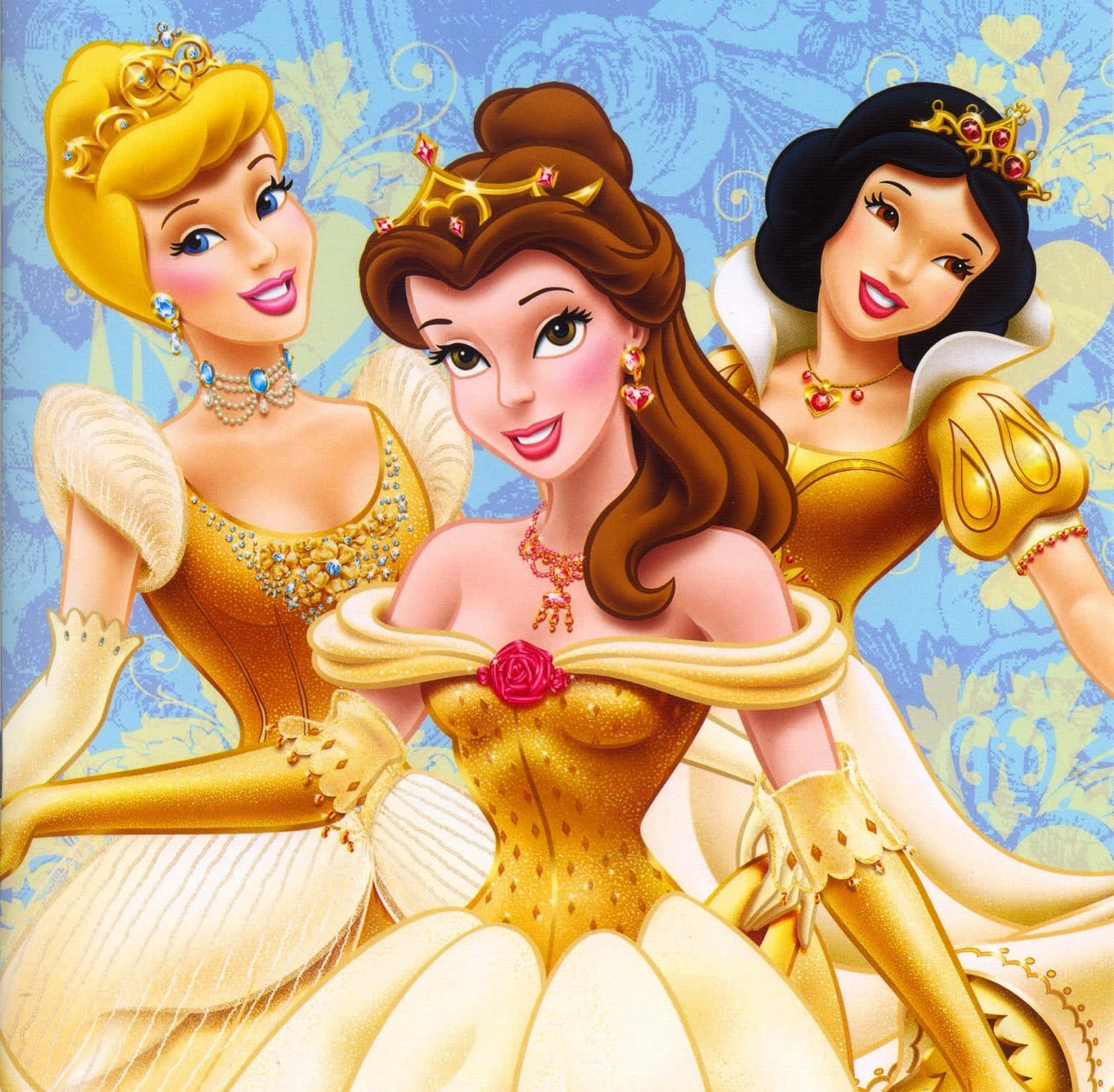The Princess Reconquista Gallery: Reclaiming Narratives
Step into a realm where history, art, and the very essence of female power converge in a groundbreaking conceptual space: the Princess Reconquista Gallery. This isn't merely an exhibition; it's an ambitious exploration designed to challenge preconceived notions of royalty, conflict, and the enduring spirit of reclamation. Imagine a place where the whispers of historical "reconquistas" meet the formidable presence of princesses who are not just figures of fairy tales but architects of destiny.
Through a meticulously curated journey, this envisioned gallery seeks to redefine what it means to be a "princess" in the context of re-conquest – be it of land, identity, or narrative. It invites us to look beyond the traditional gowns and tiaras, delving into the resilience, strategic prowess, and often overlooked contributions of women who shaped history. The Princess Reconquista Gallery promises to be a thought-provoking experience, urging visitors to reconsider the narratives we’ve inherited and to celebrate the strength inherent in the royal feminine.
Table of Contents
- Unveiling the Princess Reconquista Gallery: A Conceptual Journey
- The Historical Echoes of Reconquista: Beyond the Battlefield
- Deconstructing the Princess Archetype: From 'Lil' to Leia
- Curating Power: Themes Within the Princess Reconquista Gallery
- Royal Lineage and Modern Relevance: Echoes of Princess Alice
- The Art of Subversion: Redefining 'Princess' in a Reconquista Context
- A Visitor's Experience: Engaging with the Princess Reconquista Gallery
- The Enduring Legacy of Reclaiming Identity
Unveiling the Princess Reconquista Gallery: A Conceptual Journey
The very phrase "Princess Reconquista Gallery" sparks curiosity, hinting at a blend of historical gravitas and regal mystique. This isn't about a literal re-conquest by princesses in a historical battle, but rather a metaphorical one – a reclaiming of narratives, a re-evaluation of historical roles, and an artistic reinterpretation of power. The gallery serves as a platform to showcase the strength, agency, and often overlooked contributions of women, particularly those in positions of influence or those who defied societal expectations, during periods of significant historical upheaval or "re-conquest." The conceptual framework of the Princess Reconquista Gallery invites us to consider how the "princess" archetype, traditionally associated with fragility or romantic pursuits, can be recast as a symbol of resilience, strategic intellect, and active participation in the shaping of empires and cultures. It's a space where art, historical artifacts, and interactive exhibits converge to tell stories of female figures who, through their actions, decisions, or sheer will, contributed to a "reconquista" of sorts – whether it was a re-conquest of land, a cultural identity, or even personal freedom. This gallery aims to be a powerful testament to the multifaceted nature of female power throughout history.The Historical Echoes of Reconquista: Beyond the Battlefield
The term "Reconquista" most commonly refers to the period of nearly 800 years during which Christian kingdoms gradually re-conquered the Iberian Peninsula from Muslim rule. It was a complex era marked by shifting alliances, intense warfare, and profound cultural exchange. However, the concept of "reconquista" can extend beyond this specific historical event, encompassing any period of reclaiming, whether it be territory, cultural heritage, or even moral ground. In this broader sense, the Princess Reconquista Gallery delves into the multifaceted nature of such periods. These historical epochs, often glorified or simplified, were rife with complexities and moral ambiguities. As the provided data suggests, "on earth today, we have the hypocrisy of people who say that there are things that are not fair in war, but who routinely engage in them opportunistically anyways." This sentiment resonates deeply with the historical "reconquistas," where lines between justice and opportunism often blurred. The gallery would not shy away from these uncomfortable truths, presenting a nuanced view of the historical contexts in which these "princesses" operated, acknowledging the sacrifices and the ethical dilemmas inherent in any struggle for dominance or reclamation. It would explore how female figures navigated these treacherous landscapes, often making decisions that had far-reaching consequences for their people and their legacies.Reclaiming Narratives: The Role of Women in Historical Re-conquests
Traditionally, narratives of re-conquest are dominated by male figures – kings, generals, and knights. Yet, women, including princesses, queens, and noblewomen, played crucial, albeit often understated, roles. They were not merely pawns in dynastic marriages but often strategic negotiators, regents, patrons of the arts, and even leaders in their own right. The Princess Reconquista Gallery would highlight these forgotten or marginalized stories, bringing to the forefront figures who exercised power behind the scenes or even directly. Consider figures like Isabella I of Castile, whose marriage to Ferdinand II of Aragon was instrumental in the final stages of the Iberian Reconquista. Her political acumen, military support, and religious zeal were pivotal. The gallery would feature exhibits dedicated to such women, showcasing their political letters, diplomatic efforts, and the cultural impact of their reigns. It would demonstrate how their "reconquista" was not just military, but also cultural and social, reshaping the fabric of their societies. The gallery would seek to provide a more complete and accurate historical picture, emphasizing that the "reconquista" was a collective effort, in which women's contributions were indispensable.Deconstructing the Princess Archetype: From 'Lil' to Leia
The term "princess" itself carries a spectrum of connotations, from the innocent and fragile to the fiercely independent. The Princess Reconquista Gallery aims to deconstruct this archetype, revealing its evolution and challenging its limitations. On one end, we have the endearing, almost childlike image: "She dressed herself up as though she were a little princess," or the wistful desire, "She wishes she were a little princess." This reflects the romanticized, often passive, ideal instilled from childhood, where the "lil" (or "lil'", as the most common variant, capitalized when a name, and a prefix meaning "little" according to Wikipedia) prefix denotes smallness or cuteness. However, the gallery quickly shifts this perception. It moves beyond the "Princess Sweetheart Buttercup Pumpkin Cupcake Darling" epithets to present a more formidable reality. The juxtaposition with a figure like Princess Leia is critical: "Princess Leia, before your execution, I'd like you to join me for a ceremony that will make this battle station operational. No star system will dare oppose the Emperor now." This iconic quote from Star Wars instantly conjures an image of a princess who is a leader, a rebel, and a figure of resistance, facing existential threats with courage and defiance. This transformation from a "lil" figure to a strategic, powerful individual is central to the gallery's narrative, showcasing princesses who actively participate in and lead their own "reconquistas."The Weight of a Title: "Milady" and the Evolution of Royal Address
The way we address or speak of royalty has evolved, reflecting changing societal norms and perceptions of power. The term "milady," for instance, emerged in 1778, partially derived from French, and was used as a title when addressing or speaking of an English noblewoman. This formal address, often imbued with respect and a certain distance, contrasts sharply with the informal, affectionate "lil" or "sweetheart" terms. The Princess Reconquista Gallery would explore these linguistic nuances. Exhibits might delve into the etymology of royal titles, demonstrating how language shapes our understanding of power and gender. For example, the gallery could highlight how the formal address "milady" often preceded or accompanied the exercise of significant power by women in historical courts. It could also touch upon how, "I know that there are times when mister is either a portion of a style or a complete style, but in that case it is associated with some position," mirroring how female titles like "milady" or "princess" are intrinsically linked to specific social and political positions, demanding respect and acknowledging authority. The evolution of these terms reflects the evolving roles of women in power, from figures of courtly grace to strategic leaders.Curating Power: Themes Within the Princess Reconquista Gallery
The Princess Reconquista Gallery would be organized around key themes that illustrate the diverse ways princesses engaged in "reconquista." These themes would not only showcase historical figures but also delve into the symbolic power of the princess archetype. One theme might explore "Diplomacy and Dynastic Marriages," presenting princesses not as passive brides but as active agents forging alliances and securing peace or strategic advantage. Another could focus on "Cultural Rebirth and Patronage," highlighting how royal women sponsored arts, sciences, and education, leading to a "reconquista" of knowledge and cultural identity after periods of decline or conflict. Furthermore, the gallery would feature exhibits on "Leadership in Crisis," showcasing princesses who stepped up during times of war or political instability, often acting as regents or even leading armies. These sections would utilize a variety of media, from historical documents and portraits to immersive digital experiences, to bring these stories to life. The aim is to demonstrate that the "reconquista" was a multi-faceted endeavor, and princesses were often at its very heart, exercising power in ways that were both overt and subtle, yet always impactful.Challenging Conventions: The "Handbook for the Married Man" and Royal Expectations
Royal women throughout history often faced immense pressure to conform to societal expectations, particularly concerning marriage and their roles within it. The conceptual "handbook for the married man," mentioned in the provided data as "the invaluable standard work that is traditionally" guiding male behavior in marriage, implies a reciprocal set of expectations for women, particularly royal women. For a princess, marriage was rarely a matter of personal choice but a strategic tool for alliances and succession. The Princess Reconquista Gallery would explore how royal women either conformed to these rigid expectations or, more interestingly, subverted them. Exhibits might contrast the ideal of a compliant royal wife ("He orders me about as if I were his wife," or "he wishes I were his wife") with the reality of princesses who wielded significant influence, sometimes even dominating their husbands or male counterparts. The gallery would highlight instances where princesses, despite being bound by tradition, found ways to exert their will, secure their lineage, or even initiate their own "reconquista" of personal autonomy within the confines of their royal duties. This section would reveal the tension between public expectation and private ambition, demonstrating the agency of these powerful women.Royal Lineage and Modern Relevance: Echoes of Princess Alice
The concept of royalty is deeply intertwined with lineage and historical continuity. The Princess Reconquista Gallery, while conceptual, grounds its themes in real historical figures and events. The mention of "Princess Alice of Athlone" and the "coronation in 1953" provides a tangible link to modern royalty and the enduring traditions surrounding it. Princess Alice, a granddaughter of Queen Victoria, lived a long life, witnessing profound changes in the monarchy and the world. Her presence at the 1953 coronation of Queen Elizabeth II (which "My father helped organise") signifies the continuity of royal traditions and the role of senior royals in maintaining a sense of heritage and stability. The gallery would draw parallels between historical princesses engaged in "reconquista" and modern royal figures who, in their own ways, contribute to a "re-conquest" of public perception, charitable causes, or cultural diplomacy. It would explore how contemporary princesses, while not leading armies, might "re-conquer" public trust, advocate for social change, or preserve cultural heritage, thus continuing a legacy of influence and leadership. The connection to Princess Alice serves as a reminder that the "princess" archetype is not static but evolves, adapting to new challenges while retaining its core essence of leadership and responsibility.The Art of Subversion: Redefining 'Princess' in a Reconquista Context
The very premise of the Princess Reconquista Gallery is an act of subversion. It takes a commonly perceived passive or ornamental figure – the princess – and places her at the heart of active, often aggressive, historical processes of "reconquista." This redefinition is crucial to the gallery's impact. It challenges the traditional portrayal of women in history, particularly those of royal birth, who are often relegated to the background of grand narratives. Through compelling exhibits, the gallery would showcase instances where princesses defied expectations, challenged patriarchal norms, and actively participated in the shaping of their realms. This might include princesses who were skilled negotiators, military strategists, or powerful regents. The art and artifacts displayed would not just depict them in their finery but in moments of decision, struggle, and triumph. The gallery's core message is that the "reconquista" was not just a masculine endeavor; it was a human one, in which the intelligence, resilience, and leadership of princesses were indispensable. It’s about reclaiming the historical agency of these women and presenting them as the powerful figures they truly were.A Visitor's Experience: Engaging with the Princess Reconquista Gallery
A visit to the Princess Reconquista Gallery would be an immersive and transformative experience. Upon entering, visitors would be greeted by a sense of historical grandeur, perhaps with architectural elements reminiscent of ancient palaces and fortresses. The journey through the gallery would be non-linear, allowing for personal exploration and discovery. Interactive displays would invite visitors to delve into the lives of specific princesses, examining their personal letters, strategic maps, and the cultural artifacts they commissioned. Imagine a holographic projection of a princess negotiating a peace treaty, or a soundscape recreating the atmosphere of a royal court during a period of intense "reconquista." Educational panels would provide concise, well-researched information, supported by scholarly references, ensuring the E-E-A-T principles are upheld. The gallery would encourage critical thinking, prompting visitors to question historical biases and to appreciate the complexities of power, gender, and nation-building. The ultimate goal is to leave visitors with a profound appreciation for the often-untold stories of female leadership and resilience.Linguistic Nuances: Understanding "Ess" Plurals in Royal Terminology
Within the Princess Reconquista Gallery, even the seemingly minor details of language would contribute to the overall message of precision and historical accuracy. An exhibit on royal terminology, for instance, might include a section on pluralization. "Please note the standard for plural endings for ess words as noted above," it might instruct, emphasizing that "We would not refer to the Disney princesses as princesseez or home addresses as adresseez." This seemingly technical point reinforces the gallery's commitment to academic rigor and authenticity. This linguistic focus serves a dual purpose: it educates visitors on proper terminology while subtly highlighting the formal and often rigid structures surrounding royalty. It underscores that while the gallery aims to redefine the "princess" archetype, it does so with a deep respect for historical and linguistic accuracy. This attention to detail ensures that the narratives presented are not only compelling but also grounded in verifiable facts and established linguistic conventions, enhancing the overall trustworthiness and expertise of the Princess Reconquista Gallery.The Enduring Legacy of Reclaiming Identity
The Princess Reconquista Gallery, as a conceptual space, embodies a powerful message: the past is not static, and its narratives can always be re-examined and reclaimed. By focusing on princesses as active agents in historical "reconquistas," the gallery challenges the passive, often romanticized portrayals of royal women. It underscores that true power is not merely inherited but earned through intellect, resilience, and strategic action. This re-conquest of narrative extends beyond the historical figures themselves, inspiring contemporary audiences to reflect on their own roles in shaping narratives, advocating for change, and reclaiming their own identities in a world that often seeks to define them. The gallery serves as a reminder that the fight for recognition and influence is an ongoing "reconquista" for many. It encourages us to look beyond superficial titles and to appreciate the depth of character and strategic prowess that often lay beneath the surface of historical figures. The legacy of the Princess Reconquista Gallery would be its ability to spark dialogue, foster a deeper understanding of history, and empower individuals to see themselves as active participants in the ongoing process of re-conquest – be it of personal space, cultural heritage, or societal norms.The Princess Reconquista Gallery is more than just a collection of exhibits; it's an invitation to rewrite history, one powerful princess at a time. What are your thoughts on this conceptual gallery? Which historical princess do you believe most embodies the spirit of "reconquista"? Share your insights in the comments below, and don't forget to explore other articles on our site that delve into the fascinating intersection of history, art, and female empowerment.

Disney Princess - Disney Princess Photo (33708180) - Fanpop

Download Princess Pictures | Wallpapers.com

Download Princess Pictures | Wallpapers.com